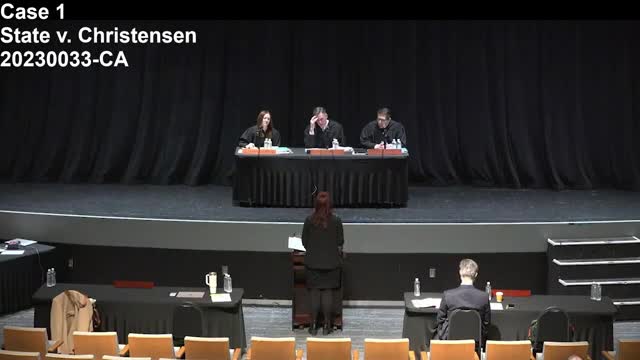Court reviews jury instructions on self-defense in Isaac's gun charges case
March 18, 2025 | Utah Court of Appeals Live Stream, Utah Appellate Court, Utah Judicial Branch, Utah
Thanks to Excel Chiropractic and Scribe from Workplace AI , all articles about Utah are free for you to enjoy throughout 2025!

This article was created by AI using a video recording of the meeting. It summarizes the key points discussed, but for full details and context, please refer to the video of the full meeting. Link to Full Meeting
The defense acknowledged that Christensen possessed a shotgun that evening, but they contested the interpretation of his actions. They argued that if he perceived the officers as intruders, his behavior could be justified under self-defense laws. This distinction is pivotal, as it could determine the legality of his actions and the nature of the charges against him.

Before you scroll further...
Get access to the words and decisions of your elected officials for free!
Subscribe for FreeThe court also examined procedural issues, particularly the motion to sever charges related to the incident. The judges discussed whether the crimes were sufficiently connected to warrant being tried together. The defense contended that the district court had abused its discretion in this regard, potentially compromising Christensen's right to a fair trial. They referenced a precedent that emphasizes the importance of ensuring that defendants receive a fundamentally fair trial, free from prejudicial errors.
As the session progressed, the judges pressed for clarity on the implications of these legal arguments, particularly concerning the potential for a different outcome had the charges been separated. The discussions highlighted the complexities of legal definitions and the weight of intent in criminal cases, leaving observers with a deeper understanding of the judicial process and its impact on individual rights.
The outcome of this case remains uncertain, but the deliberations underscore the delicate balance between law enforcement authority and the rights of individuals, a theme that resonates deeply within the community. As the court continues to navigate these challenging legal waters, the implications of their decisions will undoubtedly echo beyond the courtroom, shaping the landscape of justice in Utah.
Converted from 20230033 State v. Christensen audio file meeting on March 18, 2025
Link to Full Meeting
Comments
View full meeting
This article is based on a recent meeting—watch the full video and explore the complete transcript for deeper insights into the discussion.
View full meeting





